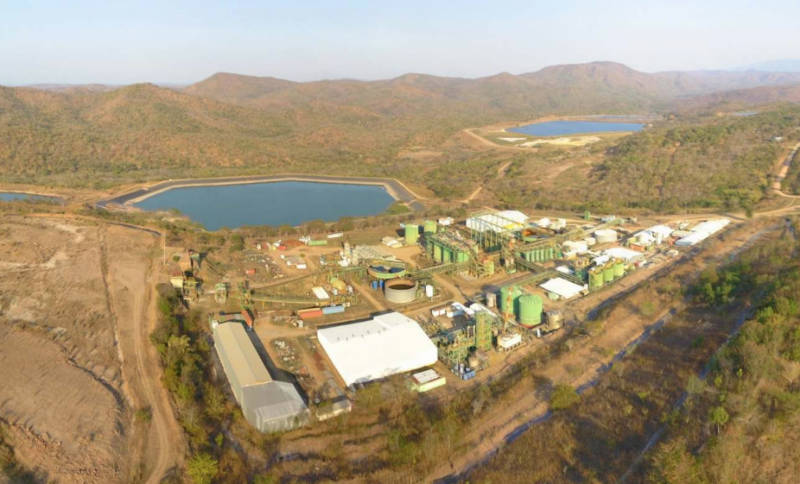DFS has Lotus eyeing a quick restart for Kayelekera uranium project in Malawai
Mining
Mining
A rapid restart of Lotus’ Kayelekera uranium project in Malawi is looking increasingly likely, following the receipt of a positive DFS highlighting its low technical risk and costs.
The Restart Definitive Feasibility Study, which is underpinned by an Ore Reserve of 15.9Mt at 660 parts per million (ppm) U3O8 or 23 million pounds of U3O8, has estimated that restarting the historical producer will incur a capital cost of just US$88m ($124.3m) and take just 15 months to complete.
Additionally, the low initial capital intensity (capital cost divided by steady state average production) of just US$37/lb is paired with all-in sustaining costs of US$36.2/lb during the first seven years of production.
This is particularly encouraging for Lotus Resources (ASX:LOT) as long-term uranium prices have been trending northwards of the US$50/lb mark since April this year, thanks to current market conditions and anticipated demand growth.
It noted that operating costs are lower than during its historical operations and Restart Scoping Study estimates despite the current high inflation environment due to increased feed grades from ore sorting, lower power costs from the grid, and improved acid use from nanofiltration.
To top it off, new and innovative initiatives will reduce power related carbon dioxide emissions by about 72%, or 21,000 tonnes per annum, which aligns with the company’s ESG goals of reducing carbon emissions.
“Having an asset with low technical risk and low restart capital, which can quickly commence production, are key characteristics that investors look for in a mining project,” managing director Keith Bowes said.
“The results of the Restart DFS clearly put Kayelekera in this category and this provides an opportunity for the Company to leverage off the strongest fundamentals for the nuclear/uranium industry in many years.
“The standout features of the Restart DFS are the low capital costs and attractive operating costs, which consider the current high inflation environment, whilst also ensuring a positive legacy as we have significantly reduced our carbon footprint, in line with the company’s ESG strategy.”

He added that while the initial upfront capital costs are higher than originally announced in the Scoping Study, they remained one of the lowest in the industry and included ore sorting, grid connection and a new acid plant which are critical for lowering operating costs.
Said cash costs of US$29.1/lb are well within the second quartile costs for current and planned uranium producers.
“With the Restart DFS now complete the company looks forward to continuing its work with the Malawian government to secure a Mine Development Agreement that will support the Project financing and shareholder returns appropriate for the scale of investment,” Bowes added.
“At the same time the company plans to increase engagement with the various nuclear energy utilities to secure offtake agreements at the necessary volumes and pricing to support the restart of Kayelekera. This work will be undertaken in parallel with our work on securing funding for the restart.”
Kayelekera is a formerly producing asset in Malawi’s Karonga District, which delivered about 11Mlbs of U3O8 between 2009 and 2014 before its closure due to a sustained low uranium price.
Under the Restart DFS, the project will use proven processing methods consisting of traditional milling, acid leach and resin-in-pulp circuits with high metallurgical recoveries of 86.7% to produce uranium.
Mining is expected to be simple thanks to a shallow open pit with a strip ratio of just 1.8 while 96% of the planned production of 19.3Mlbs U3O8 underpinned by the existing Ore Reserve, leaving just 4% coming from Inferred resources contained in existing stockpiles.
Mine life is estimated to be about 10 years with average annual production of 2Mlbs U3O8 (2.4Mlbs for the first seven years before production is sourced from stockpiles).
Lotus has already demonstrated potential to extend this mine life thanks to exploration success at Livingstonia and potential further opportunities at Chilumba and around the current Kayelekera resource.
A final investment decision could be made as early as the end of this year depending on the completion of the project work, offtake negotiations, Mine Development Agreement and financing.
Should this be achieved, first production could occur as early as the first quarter of 2024 with first shipment to customers in the second quarter the same year.
This article was developed in collaboration with Lotus Resources, a Stockhead advertiser at the time of publishing.
This article does not constitute financial product advice. You should consider obtaining independent advice before making any financial decisions.